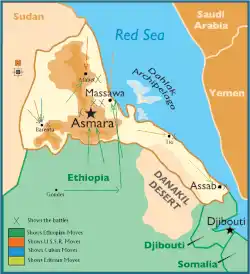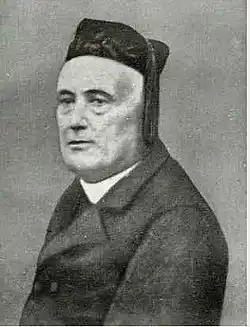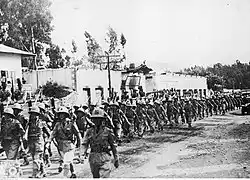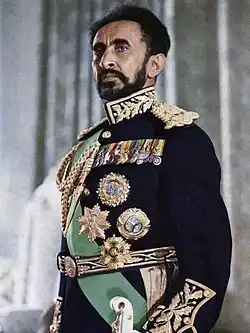
The Eritrean War of Independence was fought between 1961 and 1991 between Eritrean secessionists who wanted to the leave the Ethiopian Empire which Eritrea had been made a part of in 1952 as the Federation of Ethiopia and Eritrea. Prior to this Eritrea had been a colony of Italy from the 1880s through to 1941 when it was occupied by Britain during the Second World War. Afterwards it was bequeathed to Ethiopia to provide that nation with access to the Red Sea. Eritrean nationalists never accepted Ethiopian rule and formed the Eritrean Liberation Front in 1960 to commence an armed struggle against the government. The Eritrean War of Independence commenced the following year and continued for three decades through the Ethiopian Revolution of 1974 and the Ethiopian Civil War that followed. The Eritrean conflict became tied into these wider clashes and it came to an end at the same time as the civil war in 1991, with Eritrea acquiring its independence in 1993 after a confirmatory referendum. A fresh Eritrean-Ethiopian War was fought between 1998 and 2000 owing to disagreements concerning the border.[1]
Research your ancestors on MyHeritage
Eritrean War of Independence chronology of eventsEritrean War of Independence chronology of events

The union of Eritrea and Ethiopia has its roots in the Scramble for Africa and Italian involvement in the Horn of Africa. Beginning in the mid-1830s, an Italian monk named Giuseppe Sapeto had begun exploring the coast of the Red Sea and into what was then known as Abyssinia (Ethiopia). He subsequently became a vocal promoter of the idea of Italian colonization of this part of Africa, particularly so following the unification of the Kingdom of Italy in 1861 and then the opening of the Suez Canal in 1869, which made such a project much more feasible.[2] Through the 1870s and 1880s the Italian government and businesses made efforts to increase their influence along the coast of the Red Sea where Eritrea is today. In 1889 they were able to take advantage of unrest in the Horn of Africa and further west in Sudan to claim the coastal region here. They named the colony they established Eritrea, a name derived from the old Roman name for both the Red Sea and Indian Ocean.[3]

The Italian government tried to conquer the Empire of Ethiopia and extend their rule over much of the rest of the Horn of Africa in the mid-1890s, but they were embarrassingly defeated in the First Italo-Ethiopian War (1895–1896) and remained confined to Italian Eritrea and Italian Somaliland, an enclave on the Indian Ocean side of the Horn. Forty years later they returned and succeeded where they had previously failed. Benito Mussolini’s government invaded Ethiopia in 1935 and quickly conquered it.[4] Still, Italian hegemony over most of the Horn of Africa was fleeting, as the British overran their colonies in 1941 during the Second World War. Thereafter Britain administered what had been Italian Eritrea until the 1950s when it was granted to Ethiopia as compensation of sorts for the damage inflicted on their country by the Italians in the mid-1930s.[5]
This artificial arrangement paid little heed to local sensibilities and ethnic divisions and before long an independence movement was brewing in Eritrea amongst the two dominant ethnic groups, the Tigrinya and Tigre, neither of which were in any way represented in the central Ethiopian government. The Eritrean War of Independence movement was driven by the Eritrean Liberation Front (ELF), an organization formed in 1960. A year later they initiated an armed struggle against the government of Emperor Haile Selassie of Ethiopia. Support for the ELF grew substantially in 1962 when Selassie changed the constitutional position and annexed Eritrea directly into the Ethiopian Empire, where since 1952 it had been in a federal union therewith. They also gained support from various Muslim countries in the 1960s which kept their cause alive against very considerable numerical odds.[6]

The circumstances in which the Eritrean War of Independence was being fought altered dramatically in 1974 when the government of Haile Selassie was overthrown and the Derg movement seized power in Addis Ababa. The Ethiopian Civil War followed as different armies and groups within multi-ethnic Ethiopia sought to establish a better position for themselves following the Ethiopian Revolution. As this occurred the ELF found allies amongst some of the other groups opposed to the Derg, notably the Tigray People’s Liberation Front, which represented the Tigray people of northern Ethiopia near Eritrea.[7]
The Ethiopian Civil War and the Eritrean War of Independence would simultaneously be resolved in 1991 as the Derg lost its main supporter, the Soviet Union, at the end of the Cold War and was defeated. The United Nations subsequently oversaw a referendum on the matter of Eritrean independence in April 1993, one which passed with a 100% majority in favor of independence. Disputes over the border with Ethiopia would lead to a fresh war between 1998 and 2000, but Eritrea has maintained its independence.[8]
Extent of migration caused by the Eritrean War of IndependenceExtent of migration caused by the Eritrean War of Independence
The prolonged conflict in Eritrea led to periods of time in which many people were either internally displaced or fled Eritrea altogether. The nature of the country as a long coastal nation on the southern side of the Red Sea, proximate to both Arabia and the Suez Canal, meant that people were able to flee effectively and seek international protection. Many headed to Sudan and some ended up heading on further south to Uganda. Over 100,000 Eritreans found asylum beyond Africa. A substantial number did so in Saudi Arabia. Others went on to Europe. Approximately 25,000 Eritreans settled in Germany between 1961 and 1991. Sweden, Norway and Switzerland also took in a substantial number of Eritrean migrants.[9]
Demographic impact of the Eritrean War of IndependenceDemographic impact of the Eritrean War of Independence
The Eritrean War of Independence claimed the lives of over 100,000 people, of which nearly 40% were civilians.[10] The death toll on the Ethiopian side was substantially higher. In all around a quarter of a million people lost their lives. What impact this might have had on the overall population level of Eritrea is hard to determine, for Eritrea is unusual in the modern world in that an official government census has never been carried out here. The population today is believed to be around three and a half million people. These are estimates though. Beyond this, the demographic impact of the war was in creating an Eritrean diaspora with substantial offshoots in Sudan, Uganda, Germany, Sweden, the United States, Saudi Arabia, Switzerland, Canada and Norway. Therefore there is quite a large Eritrean diaspora today and many Eritreans worldwide in years to come will be able to trace their genealogy back to an ancestor who left the Horn of Africa as a result of the War of Independence.[11]
See alsoSee also
Explore more about the Eritrean War of IndependenceExplore more about the Eritrean War of Independence
- The Eritrean War of Independence at The Collector
- Relief, Development and the Eritrean War of Independence at Histoire et Politique
- Eritrea viewpoint: I fought for independence but I'm still waiting for freedom at BBC News
- Eritrea County Profile at BBC News
References
- ↑ https://www.thecollector.com/eritrean-war-of-independence/
- ↑ https://dacb.org/stories/ethiopia/sapeto-giuseppe/
- ↑ Tekeste Negash, Italian Colonialism in Eritrea, 1882–1941 (Uppsala, 1987).
- ↑ Alberto Sbacchi, ‘The Italians and the Italo-Ethiopian War, 1935–1936’, in Transafrican Journal of History, Vol. 5, No. 2 (1976), pp. 123–138.
- ↑ Andargatchew Tiruneh, ‘Eritrea, Ethiopia and Federation (1941–1952)’, in Northeast African Studies, Vol. 2/3, No. 3/1 (1980–81/1981), pp. 99–119.
- ↑ John Markakis, ‘The Nationalist Revolution in Eritrea’, in The Journal of Modern African Studies, Vol. 26, No. 1 (March, 1988), pp. 51–70.
- ↑ Gebru Tareke, Donald Kagan and Frederick Kagan, The Ethiopian Revolution: War in the Horn of Africa (Yale, 2009).
- ↑ https://www.bbc.co.uk/news/world-africa-13349078
- ↑ https://ispu.org/eritrea-and-its-refugee-crisis/
- ↑ https://journals.openedition.org/remi/2712
- ↑ https://pure.giga-hamburg.de/ws/files/21213864/wp236_hirt.pdf

